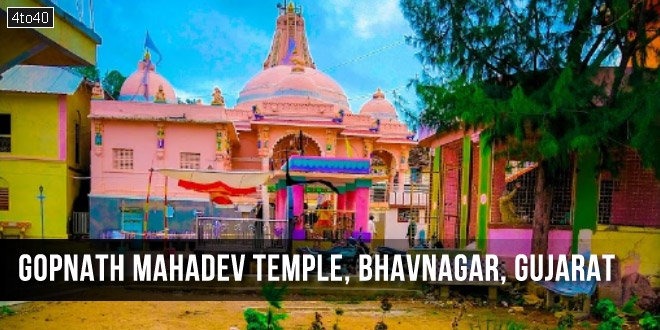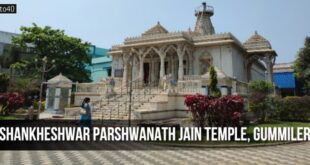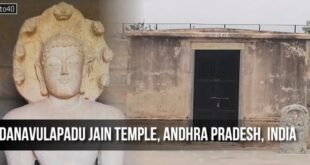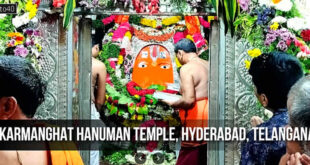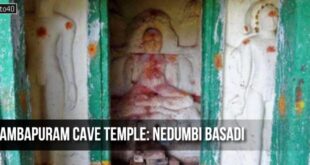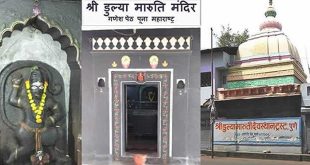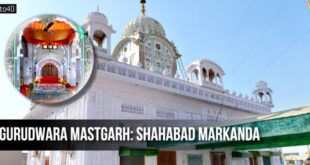Gopnath Mahadev Temple: India’s great and rich history has global recognition. The temples of India are regarded as the finest examples of architecture. Even today, the country has many temples that astound even the most modern architecture. It appears hard to know how these temples were constructed in ancient times. However, foreign Islamic invaders in India primarily targeted temples for destruction and looting. The reason for this is not merely that those people resisted idol worship.
Gopnath Mahadev Temple: Shiv mandir that stood resilient in the face of 16th-century Islamic invasion
Islamic tyrants have made several attempts to ruin this temple in the past. Muslim attacks increased in the 16th century. However, the local Hindu community remained unified in their resistance to these attacks. Along with this, the Rathore royals of Zanzmer have offered significant sacrifices to protect this shrine, which is under the jurisdiction of the Zanzmer realm.
Gopnath Mahadev Temple, Talaja Taluka, Bhavnagar, Gujarat
One of the reasons behind this is that the entire history and self-esteem of the people were linked to a temple in India. Along with the temple, the country’s educational system was also destroyed. History states that the Islamists attacked and destroyed several universities and libraries in India which consisted of ancient Indian knowledge. Today we will discuss one such temple that was conquered by Muslim invaders in the 16th century. The temple’s name is Gopnath Mahadev Mandir and its history is also very interesting.
Gopnath Mahadev’s shrine is located near Zanzmer village in Talaja taluka, Bhavnagar district. OpIndia’s team visited this old temple in Bhavnagar. OpIndia had extensive discussions with temple trustee Ghanshyam Singh Rathore, as well as other office bearers and mahants. We discovered that this temple is incredibly ancient and has a rich history. In the sixteenth century, Islamic invaders stormed this temple, killing numerous innocent Hindus.
| Name: | Gopnath Mahadev Temple |
| Location: | 6455+X5R, near Shivam Vidhyalay, Talaja, Gadhula, Gujarat 364135 India |
| Deity: | Lord Shiva |
| Affiliation: | Hinduism |
| Architecture: | Distinctive Style |
| Founder: | – |
| Completed In: | 12th century |
A famous legend connected with Gopnath Mahadev Temple:
Many stories and legends are associated with this temple. However, one story about Narsingh Mehta is regarded as the most relevant from a historical perspective. According to legend, Narsingh Mehta lived with his brother and sister-in-law at Talaja. He was engrossed in Krishna worship all day. Tired of this, his sister-in-law advised him that it was better to go to a forest area and take sanyas than to stay like this all day. Then they left home and wandered around the villages near Zanzmer. At that time the entire area was forested.
Narasimha Mehta Gopnath reaches a location, gives up food and water, and begins worshipping Mahadev. After worshipping the Lord for 7 days without food or water, Mahadev feels pleased with him and grants him darshan in formless form. Lord Shiva asks Narasimha Mehta to request a boon. Then, Krishna devotee Narasimha Mehta expresses a desire to see Lord Krishna and the Gopis in Rasalila. Lord Triloknath grants his wish and shows him Lord Sri Krishna’s Rasalila. Even today, upon entering the temple, if you look up, you will see Raslila, in a model form of architecture.
After the rasalila, Lord Krishna and the gopis searched the forest for pure fruits to eat. However, the Gopis had a rule that they accepted anything only after bowing down to Mahadev. At the time, Lord Shri Krishna suggested the Gopis to design the Shivling with their ornaments. The Gopis created the Shivlinga with their jewels. Hence, he is known as Gopnath Mahadev.
This temple is where Narasimha Mehta produced his prabhatia and devotional hymns, known as Adikavi and Bhaktakavi, which are well-known in Gujarati literature. But over the years, this temple was razed. Following that, the Gohil royal family of Rajpipla reconstructed this temple.
The temple was initially established, but there was no land under its authority; nevertheless, in the 15th century, the Waja Rathod monarch of Zanzmer, Lagdhirsingh Rathod, granted 1300 bighas of land to the temple. Today, there are numerous facilities such as hostels and cowsheds. An inscription as proof of the land donation is still extant at Gopnath.
Attacks were carried out by Islamic assailants:
Islamic tyrants have made several attempts to ruin this temple in the past. Muslim attacks increased in the 16th century. However, the local Hindu community remained unified in their resistance to these attacks. Along with this, the Rathore royals of Zanzmer have offered significant sacrifices to protect this shrine, which is under the jurisdiction of the Zanzmer realm. The Rathodas of Zanzmer has long practiced their religion with unparalleled courage and adventure. Locals also joined the struggle to safeguard Mahadev’s temple. The last major attack on the Gopnath temple took place in the sixteenth century. A terrible war also happened following the attack.
A small group of people fought against a large Islamic army. During this war, many Hindus were martyred. This proof may still be found at Zanzmer and Gopnath in the paliyas (tombs of heroes who sacrificed for women, cows, homeland, and religion) of these brave warriors. It should be mentioned that Zanzmer was regarded as a sub-state of the Bhavnagar state, which was ruled by the Rathore royal family back then.
Relationship between PM Modi and temple:
This temple has been the site of numerous events. Narasimha Mehta was a well-known devotee poet and adikavi in this area. Apart from that, Prime Minister Modi was hiding in this area after Indira Gandhi declared an emergency in the country. He spent a long time worshipping the Lord at this temple. Also, he learned about Gopnath’s history from the locals. Many old individuals and locals claim that Prime Minister Modi used to meditate and practice yoga on the beach here. He was also worshipping God at the temple.
A masterpiece of architecture:
As soon as one enters the Gopnath temple, one notices the distinctive style of architecture. The temple’s design is additionally stunning. This temple has grown in popularity as a tourist destination due to its location on the seashore. The temple is intricately crafted. Along with this, the raslila of Lord Krishna and the gopis have been portrayed within the temple.
Many idols have been erected in this one temple. Those old statues are likewise quite lovely. A symbolic Shivlinga has been installed for pilgrims’ darshan. The original Shivling created by the Gopis is reported to be underground. A white flag is raised towards the temple’s peak. As a result, the locals refer to Mahadev as the ‘Dholi Dhajavala God’. Such wonderful architecture is still unknown to a large number of people.
The Lighthouse:
A Divadandi, or lighthouse, can be found here as well because Gopnath Temple is located near the coast. The first lighthouse was established in 1879. Since 1975, it has stopped working. The white-painted double-veranda lighthouse has a masonry minaret around 12 meters tall. The lamp was removed from it. Bhavnagar State built this historical lighthouse. The site is nonetheless open to visitors, despite its deteriorating state, however, the minaret has been closed.
When the first lighthouse was closed in 1975, work on the second lighthouse began. That lighthouse is still functioning. Every 20 seconds, a light illuminates. Its flash travels about 7 to 8 kilometres. This new lighthouse was constructed at a distance of approximately 500 meters towards the north of the old lighthouse. Recently several developments have taken place at the location including the construction of a museum and other modern architecture at the temple.
Very beautiful beach:
Gopnath Temple is a popular tourist attraction as it is located on the seashore. As soon as you arrive, the ethereal sound of the sea is heard, which provides constant peace to the human mind. The locals here revere the sea as a God. Locals come to the temple regularly to listen to the profound sound of the water and contemplate. A statue of Narasimha Mehta is located outside the temple, close to the sea. Along with this, Shivlinga and Lord Shani’s idols have been erected. All safety arrangements have also been made as the sea waves are approaching at times. Also, there is a Swaminarayan temple here.
The Gopnath Mahadev Temple is managed by two trusts. 1) Mahant Vasi Trust; 2) Brahmachari Vasi Trust. The Mahant Vaishi Trust is led by the Deputy Collector of Bhavnagar, whereas the President of the Brahmachari Vaishi Trust is chosen from the general public. The Gopnath Mahadev Mandir Trusts established canteen arrangements. Here, anyone, regardless of social class, is eligible for free prasad coming from God. There is also an ancient cave at this location, which is believed to be as old as Gopnath Mahadev Mandir.
The artwork, gorgeous scenery, and historical significance of Gopnath Mahadev Temple distinguish it from other temples. This location is well-known for its tourist attractions, spiritual significance, and value in terms of entertainment. The sentiments of the local people are very much attached to this temple.
 Kids Portal For Parents India Kids Network
Kids Portal For Parents India Kids Network
